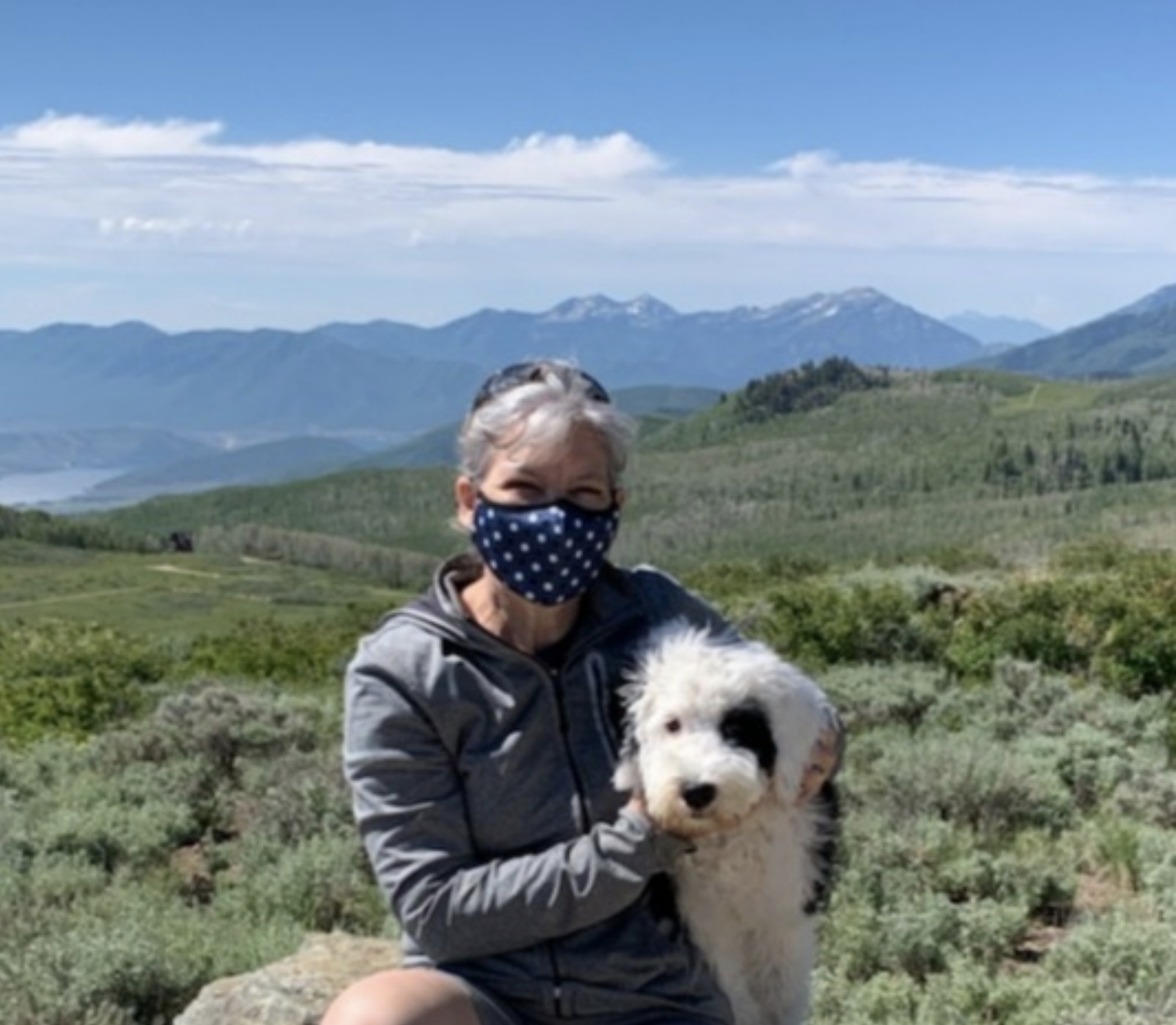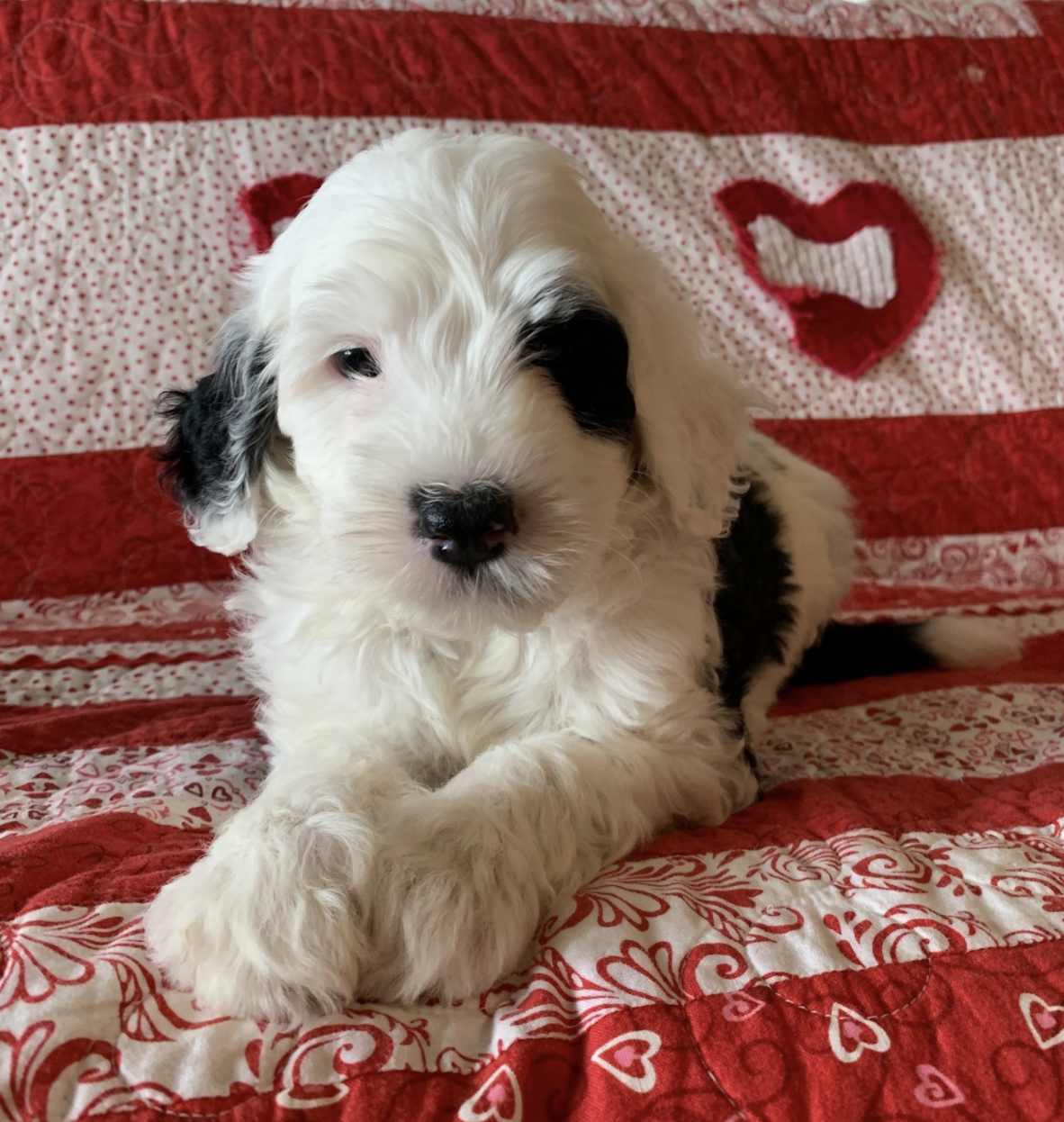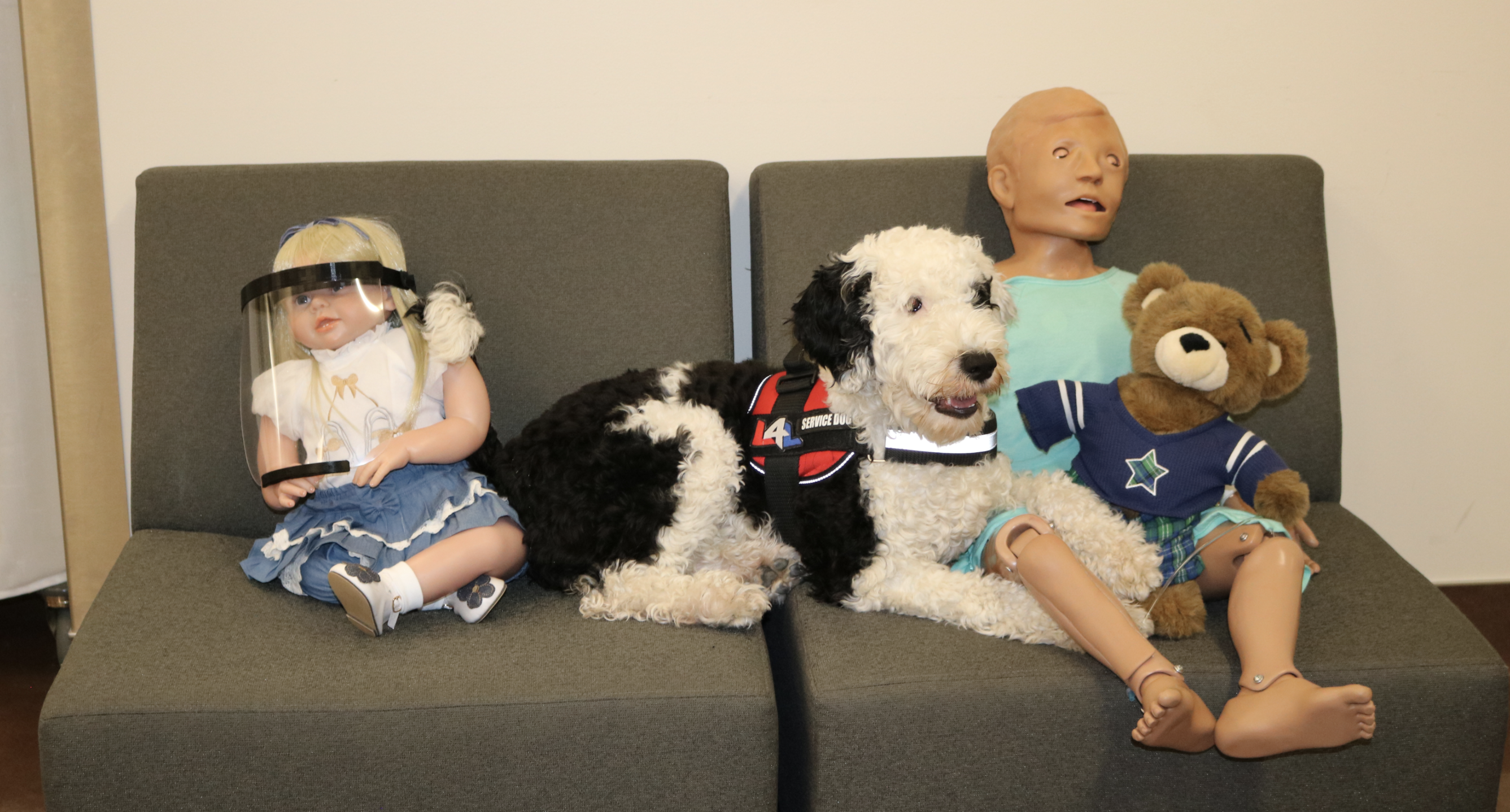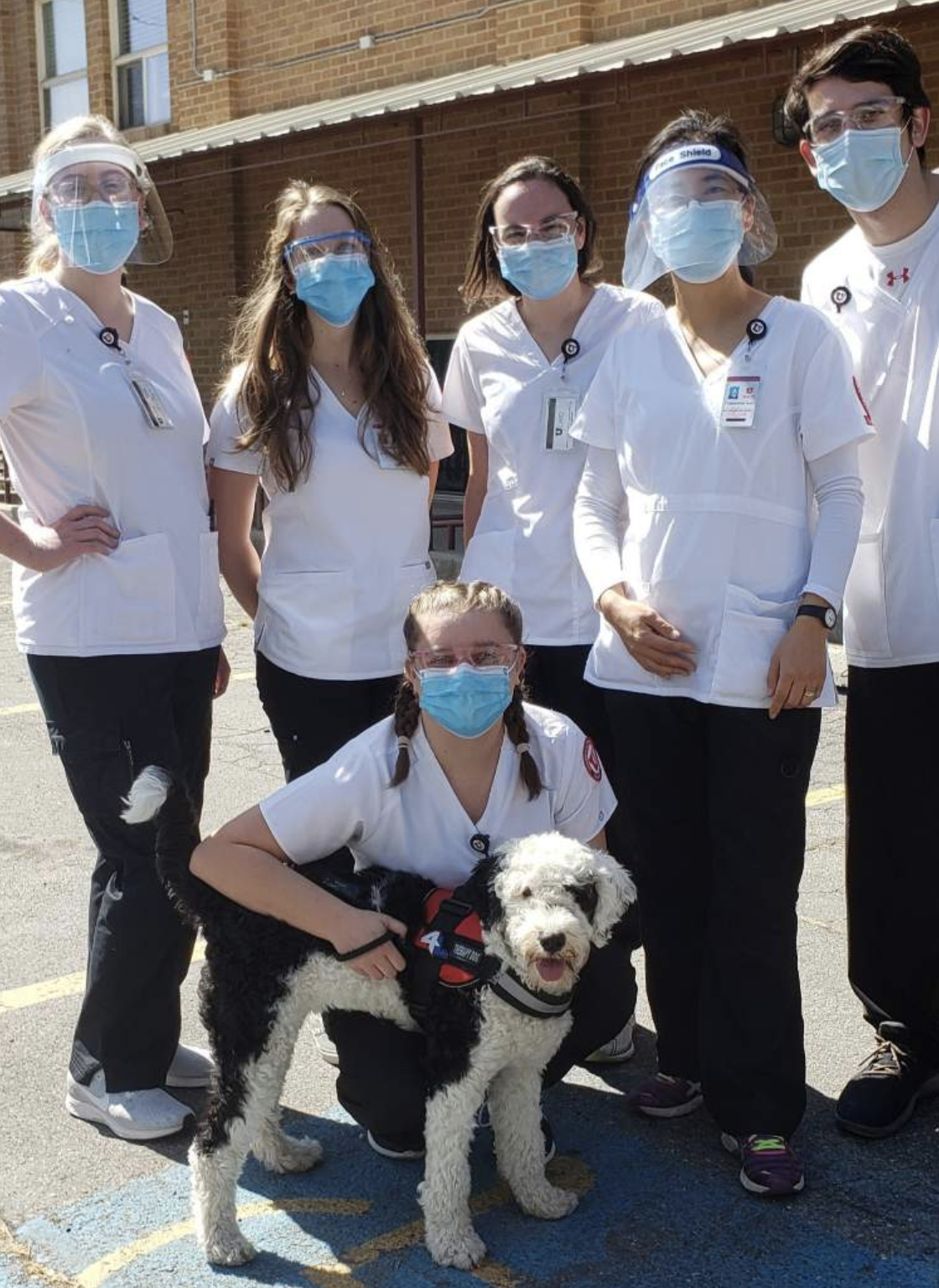Gracie the therapy dog and her handler Ann Butt, Ed.D, RN, CHSE, Associate Professor, are working to make the College of Nursing (CON) a happier place.

The pawsome path to the CON’s therapy animal initiative
Last spring, the CON began a new therapy animal initiative led by Associate Professor Ann Butt, Ed.D, RN, CHSE. Butt loves animals and the positive effect they can have on humans. “When I started college, I actually planned to go to vet school,” she says.
Since moving to Utah in 2016, Butt has been a dog trainer and foster parent for Labs 4 Liberty (L4L), a non-profit that gifts trained service dogs to Military Veterans. Butt brings her L4L dogs-in-training to work with her at the CON, which has given her great handling experience within the health care setting. “One thing that is hard about training service dogs is that people are not allowed to pet them while they’re working. It was hard to deny people that opportunity, but that’s when I started thinking about the potential benefits that a therapy dog within the CON—that people could pet—might have,” says Butt.
As an advocate for student wellness, Butt also considered the positive impact that a therapy dog could have on the mental health of nursing students. “Over the years, I’ve seen the stress that nursing school can add to student’s lives, including anxiety, depression, and even suicide,” relays Butt.
Seeing the interest and positive effect of having a dog at the college with her, Butt asked CON leadership if she could obtain a therapy dog for students, faculty, and staff—they agreed! “I’m so grateful to our leaders for recognizing the benefit of this idea, and having faith in me to figure it out and make it work,” says Butt.

All about Gracie
Gracie the CON therapy dog is a nearly one-year-old Portuguese Water Dog (PWD). “PWDs were originally bred to help fishermen by herding fish into nets, and by swimming back and forth between ship and shore carrying messages,” says Butt. “She is definitely a working dog—intelligent, high energy, strong, always ready to go. She needs a job!” PWDs have a waterproof coat that does not shed, meaning she is hypoallergenic and safe to be around those with allergies.
“Gracie is happiest when she’s moving. She loves to hike, wrestle with other dogs, chase sticks, play tug, and she’s happy in the water,” relays Butt. “She wants to please and has a great sense of humor. She also has quite an independent (stubborn) streak which sometimes makes training even more challenging. The girl definitely has a mind of her own.”
Promoting wellness through therapy animals
Research has shown that the presence of an animal can decrease stress, lower blood pressure, and generally improve wellness. Hospitals, long-term care facilities, penitentiaries, and schools are just a sampling of spaces that use therapy animals to refocus attention and promote wellbeing in humans. “Animals are non-judgmental. They think humans are the best, no matter how (or if) we talk to them or what’s going on,” says Butt. “They’re generally just happy to hang out with us, and they can offer a distraction from a difficult or stressful situation.”
Butt explains that there are a couple of different ways in which therapy animals—usually dogs, but can be cats, birds, horses, pigs, llamas, etc.—interact with humans in a structured way. Animal Assisted Activities, which is Gracie’s job, allows therapy animals to recreate and visit with individuals and groups. Animal Assisted Therapy allows animals to aid health professionals and patients achieve specific treatment goals.

An officially certified good girl
Gracie has been working hard to become a certified therapy animal. However, COVID-19 has made it difficult for Gracie to socialize and train as her exposure to students, class, and on-campus activities has been limited.
Nonetheless, Gracie and Butt persevere. “Once she is one-year-old, I’ll have her evaluated through Pet Partners, a therapy animal certification organization, to make sure she is safe and well-behaved. Pet Partners also requires handlers to complete a course before we are evaluated as a team,” explains Butt. “It’s important that I am confident that Gracie is safe around people, and that providing therapy is not harmful to her in any way.”
A day in the life of a working dog
As a working dog, Gracie’s days are never dull. “Gracie is with me wherever I go. She goes to class with me and interacts with students in the classroom and simulation lab, as well as walking around campus.” Gracie has even made appearances on Zoom during virtual class due to COVID-19.
When COVID-19 restrictions lift, Gracie’s days will be even busier. Butt plans on introducing Gracie to the hospital environment, and will work toward having her in other faculty member’s classrooms. "She may end up with her own Outlook calendar where folks can sign up to have her around at certain times, such as before an exam to ease student’s anxiety” says Butt.

Gracie, the CON’s newest mascot, lights up the room
Butt has seen firsthand the positive impact that Gracie has on CON community members—especially students. “I’ve watched the faces of students, faculty, and staff light up when she’s in the room or when they meet her in the hallway,” says Butt. “Students have commented on much they enjoy having Gracie around, and her presence alone can make people smile and sometimes laugh.” During Gracie’s short time at the school, she has quickly become a mascot of the CON.
What’s next for Gracie, Butt, and the CON?
Butt and Gracie have a bright future at the CON and U of U Health. In addition to Butt’s interest in completing official research about the effect of Gracie’s impact on the CON, she also hopes to partner with other entities on the U of U Health Sciences campus. “We’re going to work on developing opportunities for therapy and partnerships as they arise,” says Butt. “We’re figuring it out as we go.”
Until then, we will continue to enjoy seeing Gracie’s bright eyes and wagging tail at the CON.